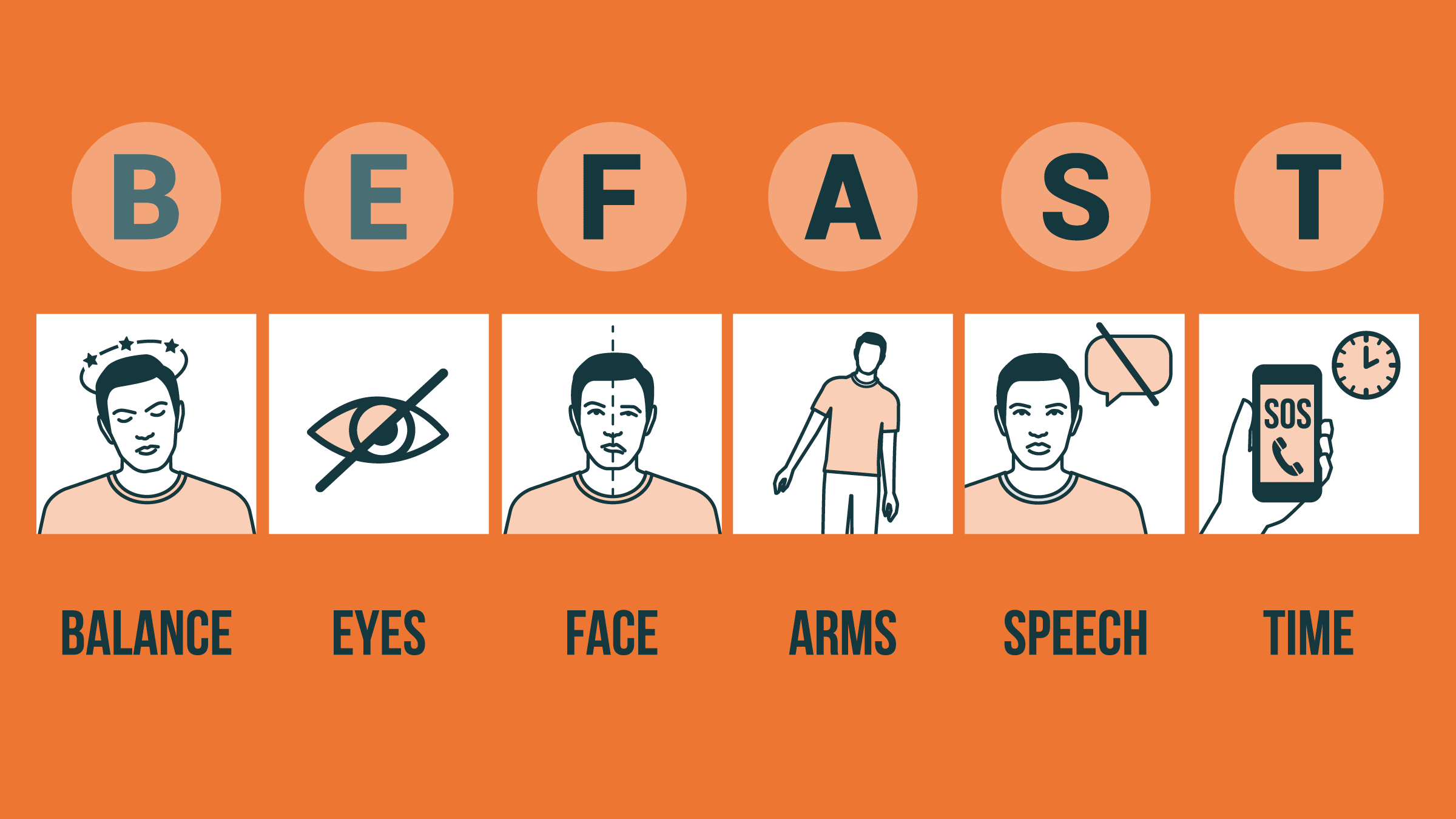Every 40 seconds, someone in the United States suffers a stroke. Many victims survive, but far too many face disability or death.
Once a patient has a stroke, every second counts. Billions of neurons are lost with each passing second. Knowing the signs of this medical emergency and getting medical treatment fast can save lives.
The signs can often be mistaken, so knowing and remembering B.E.F.A.S.T. helps identify the early warning signs of stroke.
Balance. Has there been a sudden loss of balance or coordination, or a sudden onset of dizziness?
Eyes. Is there sudden difficulty seeing out of one or both eyes?
Face. Is there asymmetry in the face, or do you notice an uneven smile?
Arms. Is there weakness or numbness in the arms, and can both arms be raised evenly?
Speech. Is speech slurred or garbled, or is it even possible to form words?
Time. If any of the above signs are present, it’s time to call 911!
Stroke is an emergency
Stroke stops oxygen from reaching the brain and causes brain cells to die immediately. When it comes to treatment, time is critical. Patients also must meet rigorous existing criteria to receive the two treatment options that doctors have in their arsenal: a clot-dissolving drug that must be administered within 3-4½ hours after stroke and surgery to remove the clot.
The drug recombinant tissue plasminogen activator (rtPA) is the only drug approved by the Food and Drug Administration (FDA) for the treatment of stroke. It acts by dissolving obstructive blood clots to allow blood to flow normally again. It’s the standard of care, but it comes with a high risk of serious complications, such as hemorrhage. If a clot that can be removed is identified, a patient undergoes surgery.
The problem is, 80% of stroke patients in the United States who come to the hospital for treatment do not qualify for drug treatment or the blood clot causing the stroke cannot be removed surgically.
Knowing the signs of stroke is the first line of defense. Second is quickly getting a patient to the hospital for effective treatment that can limit damage to the brain and increase the chance of a full recovery.

Every stroke is different, and where you go for care matters.
Ohio State’s Comprehensive Stroke Center is at the forefront of stroke care and our teams are developing and delivering the most advanced and innovative treatments.
Learn more





